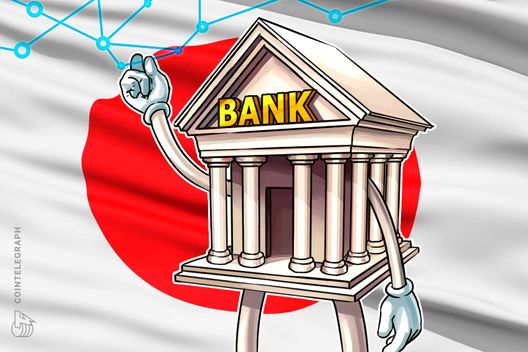Two Sides of the Same Derivative: Comparing Traditional and Crypto Markets
Crypto derivatives volumes have hit a new record high in May 2020. The early generation of crypto investors mostly worked with a hold-and-sell perspective. With the inevitable evolution of the market and the advent of cryptocurrency derivatives, investors with varied agendas — such as the desire to trade Bitcoin (BTC) volatility in both directions, hedging against major market movements, mitigating risks, etc. — began to flock to this asset class.
Derivatives are complex financial instruments that enable these agendas but often prove to be overwhelming for inexperienced and uninitiated investors to manage. As derivatives are pegged to an alternative asset class such as cryptocurrencies, these instruments are made even more challenging for an average investor to comprehend and thus, makes them more skeptical of these investments as compared to traditional derivatives that are also complex in nature.
In spite of this, the crypto derivatives market has rapidly expanded, especially in the years since the crypto bull run of December 2017. The stage they have reached in their lifecycle can be compared with the early evolution of derivatives in the traditional capital markets, such as the Chicago Board of Trade becoming a part of the Chicago Mercantile Exchange, whose current underlying assets are mainly equities, bonds, currencies, commodities, major indexes and even interest rates.
Evolution of crypto derivatives
Since the early development of crypto derivatives on elementary trading platforms like ICBIT in 2011, they have garnered considerable interest from staunch believers in the crypto market, hitting average volumes of about 1,500 BTC a day. Back then, the only product available to traders were BTC futures, they enabled a trading price arbitrage based on future prices and even helped them to mitigate price volatility of BTC.
Fast forward nearly a decade to the COVID-crisis-affected world of 2020, and crypto derivatives hit a record high of $602 billion in May, with major exchanges like OKEx, BitMEX, Huobi, and Binance maintaining their dominance. Among them, Huobi accounted for the largest trade volume, at $176 billion and up 29% month-on-month, followed by OKEx and Binance with $152 billion and $139 billion trades’ worth, respectively. However, it is worth noting that in the same month, CME’s futures saw a 44% drop in volume, which is indicative of the lack of institutional trust in crypto derivatives during times of economic uncertainty.
Differentiation from traditional derivatives markets
Higher volatility in the crypto derivatives markets due to larger movements in the underlying currency allows for a higher return. According to research by Eurekahedge in 2019, crypto funds have an average return of 16% as compared with the 10.7% return from hedge funds, which are typically the top-performing funds in the traditional capital markets. Pankaj Balani, CEO of Delta Exchange — a Singapore based cryptocurrency derivatives exchange — discussed this difference with Cointelegraph:
“Returns have to be looked at in conjunction with per unit risk taken to generate that return. The volatility of an asset class is a measure of the risk that an asset class carries. Crypto certainly carries a higher risk than mature asset classes and hence returns have to be higher in order to attract capital.”
However, with the increased price stability of BTC, the scope for these abnormally high returns are bound to reduce over time. Unlike most derivatives markets, crypto derivatives indexes pull data from markets that are open 24 hours a day, seven days a week, allowing for longer trading periods for investors in various time zones.
As the cryptocurrency market is mostly limited to currency-based derivatives, there are only a certain number of products that exist: perpetual contracts/swaps, futures/forward contracts and options. In traditional markets, the number of products are endless due to the various types of underlying assets, and even those are evolving at a rapid pace due to the tranching capabilities of some of those products, such as collateral debt obligations.
Even when up against foreign exchange derivatives, the volumes are not comparable due to the difference in the number of established fiat currencies and cryptocurrencies. However, the increased interest in options in recent times is acting as a launching pad for many new American and European options products in exchanges such as Bitmex, OKEx, CME, CBOE, Deribit and Ledgerx. The graph below shows the monthly derivatives volumes in comparison to the average monthly figure of $13 trillion just for FX derivatives.

Currently, crypto derivatives markets are largely unregulated. While this is lucrative for a segment of high-risk, alternative investors, it proves to be a deterrent for conventional orthodox investors mainly due to the ambiguity in settlement (high counterparty risk), whereas traditional capital markets operate using custodians or central clearing counterparties — highly regulated institutions that take on and manage counterparty risk, such as the Options Clearing Corporation.
Various crypto exchanges have also been making efforts to mitigate this counterparty risk and make collateral transfers faster, while Deribit has launched an external custody solution. Meanwhile, Binance and BitMEX have created insurance funds to prevent the auto deleveraging of successful traders’ positions. That being said, these efforts are still in their nascent stages and the mechanisms have not proven their worth just yet.
In the derivatives markets, institutional investors rule the roost in terms of volumes due to the capital requirements that came about with the Volcker Rule. However, in the case of crypto derivatives, institutional investors are just beginning to enter the market amid heavy skepticism. Co-founder and CEO of capital market platform Cross Tower, Kapil Rathi commented to Cointelegraph on the issue:
“One feature that is consistently different when digital assets are compared with traditional assets is the private key, which raises intricate questions as to what constitutes ‘possession and control’ and ‘custody.’ U.S. regulators are now evaluating these very complex questions. As the crypto market matures and answers to these regulatory questions develop, the same will hold true for the derivatives market. We believe the CFTC’s recent guidance with respect to the meaning of ‘possession and control’ will allow for the development of certain products in the retail market.”
On the nature of individual and institutional investors as well as their respective requirements, Kapil further commented that institutions may have different reasons behind including derivatives in their portfolios, as they may be “hedging their derivatives exposure in real-time or engaging in multi-leg transactions,” and therefore factors such as speed and liquidity of the platform will be critical. He further added:
“Growth and mainstream adoption of every asset class requires the participation of both individual and institutional investors. Within the two categories of individuals and institutions, there are subsets of users who require different types of tools and capabilities to execute their strategies. For example, within the category of individual investors, certain sophisticated investors are not afraid to build their own automated trading strategies and connect to exchanges via low latency gateways and interfaces.”
Pricing is another aspect to consider. Traditionally, equity futures are typically priced using variables such as risk-free interest rate and dividends, and currency forwards are priced based on foreign and domestic interest rates of the two currencies in the transaction. Additionally, equity options are typically priced using the Black-Scholes option pricing model and currency options are priced using the Garman-Kohlhagen option pricing model.
Since cryptocurrencies are their own asset, this makes a point of debate: whether to price as a commodity or a currency. Currently, BTC derivatives are traded at different prices on various exchanges, creating ambiguity as to which of these prices should be used to price the options contracts. Uniform pricing techniques need to be developed along with seamless technology to encourage broader institutional involvement. Balani commented that prices can vary between venues due to different spot indexes, cost of capital for market makers and demand-supply dynamics on an exchange, he added:
“The prices for options contracts on any exchange are linked to those of futures on that exchange or the spot index price used on that exchange. This information is easy to factor-in and any gap in pricing can be easily adjusted for. Having said that, different venues will have different pricing for implied volatility and whichever exchange has the most aggressive pricing will eventually attract the volumes.”
Resemblance
Despite the many differences in the two markets, there are several points at which they converge due to the inherently similar nature of derivatives as an instrument. Generally, derivative volumes are often a function of leverage/margin, as a higher margin allows investors an opportunity to have larger speculatory and hedging positions that usually only institutional investors have access to due to the related capital requirements.
This is a phenomenon also noticeable in crypto derivatives. When Japan’s FSA asked BitFlyer to reduce the maximum available leverage from 15x to 4x on May 28, 2019, its trade volume declined overnight by at least 50%, similar to the drop in trade volume after the Volcker Rule was passed under the Dodd Frank Act, introduced in the aftermath of the 2008 financial crisis.
Related: Bitcoin Options, Explained
Since 2018, there has been an increasing use of the Financial Information eXchange, or FIX, protocol among crypto exchanges, which is a platform used for communications in the traditional capital markets to exchange real-time information related to transactions and markets. This enables the exchanges to increase their efficiency and speed of transactions, as FIX is able to process hundreds of messages every second in each session.
Evolved crypto derivatives markets
Continuous evolution of products in the derivatives world is inevitable, making it difficult for regulators to keep pace, like with the role of collateralized debt obligations or mortgage-backed securities in the 2008 financial crisis. An increase in regulations globally like in the case of the United States Securities and Exchange Commission and the Commodity Futures Trading Commission working on the Crypto-currency Act 2020 will allow for better price discovery and price stability, as seen in the case of Bitcoin from the evolution of perpetual swaps and futures contracts, hedging and risk management for investors. This, in turn, will increase investor confidence in cryptocurrencies as an asset class.
The launch of crypto derivatives exchanges that are backed by major institutions will also provide a major boost to investor confidence. For example, Bakkt is an exchange owned by the Inter-Continental Exchange (which is the company that owns NYSE) and trades both in physically settled and cash-settled futures. A Binance exchange spokesperson commented on the matter: “All adoption will contribute to increased investor confidence. Adoption and participation from traditional institutions usually get more media attention, partly because of their legacy brand, and that in itself can be a good thing.”
The lack of physical settlement across the board in exchanges proves to be a major deterrent for investors, as cash settlement allows for market or price manipulations from large, single players. Physical settlement resolves this, as it allows for a more sophisticated arbitrage mechanism between the contracts and underlying spot prices. Thus, to encourage more traditional investors to join the market, it is essential that physical settlement is provided across all major exchanges along with cash settlement, as they are both lucrative to different sections of investors.
Unlike the underlying assets of traditional markets, the supply of cryptocurrency is limited. This allows for derivatives prices to fluctuate even more, as the instruments are inherently highly sensitive to supply-demand factors of their underlying asset. The scarcity of cryptocurrencies also gives room for higher price speculation opportunities due to increased volatility, but also a higher chance of price manipulation at the same time.
Still a waiting game?
In the current scenario, where there is high volatility in the market and a continually increasing interest in crypto derivatives coming from the likes of JP Morgan and Morgan Stanley as they launch FTX Derivatives in Africa and crude oil futures. What’s more, even the BTC miners might get into the mix to improve their supply-demand stability, making it clear that crypto derivatives will experience growth in subsequent years.
Despite the promise of growth that crypto derivatives show, there are gray areas that need to be addressed by regulators in various global markets as they are in Singapore, whose financial regulator proposed crypto derivatives being allowed on domestic exchanges. To discuss the matter further, Cointelegraph spoke to Jay Hao, CEO of OKEx, which deals with derivatives. He opined that regulation is a key factor:
“For more institutions to enter the space, they need to be sure that the correct procedures are in place for their clients. They also need to work closely with exchanges to establish a proper definition of crypto within the regulatory framework. The classification of the underlying is the basis of the discussion related to crypto derivatives. […] Some ways regulators can work with exchanges without stifling their growth are adopting a suitability test, restricting leverage, examining the Margin rule and clearing. Most of this can somehow be adopted by existing derivatives frameworks.”
To enable traditional retail and institutional investors to flock to the crypto derivatives market in volumes comparable to the traditional derivatives markets, it is essential that regulators step in with a reasonable set of policies eliminating the shortcomings of the current system but are not detrimental to the growth expected in the near future. However, according to a recent Fidelity survey, 36% of institutional investors in the U.S. and Europe have digital assets in their portfolio, compared with 22% in 2019 — a highly encouraging sign.
Related: Derivatives in Crypto, Explained








